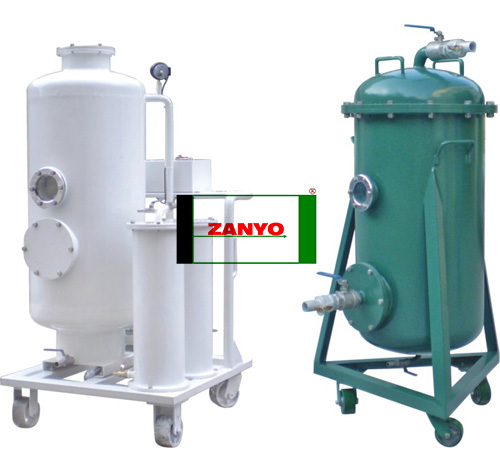Exactly How Regenerated Transformer Oil Expands Transformer Life Expectancy
The role of transformer oil is essential in ensuring the integrity and long life of transformers, acting as both an insulator and coolant. Restored transformer oil offers an engaging remedy to improve these features by efficiently getting rid of damaging contaminations that endanger performance. Via a precise regrowth procedure, the oil's dielectric residential properties and thermal security can be restored, causing substantial improvements in functional performance. Understanding the complexities of this procedure and its broader ramifications for transformer upkeep reveals a pathway to not just extend life expectancy however likewise enhance expenses in energy monitoring systems.
Value of Transformer Oil
Transformer oil plays a crucial function in the effective procedure of electrical transformers. It mostly functions as an insulating tool, ensuring and protecting against electrical discharges that elements operate safely under high voltage conditions. The oil's dielectric buildings are basic to maintaining the integrity of the transformer, as they decrease the threat of failings that might result in expensive downtimes or disastrous events.
In enhancement to its protecting capabilities, transformer oil also functions as a coolant. As transformers run, they produce warm that needs to be dissipated to avoid overheating and subsequent damages. The oil distributes within the transformer, moving and taking in heat far from crucial parts, thereby keeping ideal operating temperatures.
In addition, transformer oil works as a barrier versus dampness and pollutants, which can endanger the efficiency and longevity of the transformer. Its chemical homes help in neutralizing acids and various other by-products that might develop over time, adding to the overall health and wellness of the electric system.
Benefits of Regenerated Oil

In addition, regenerated transformer oil has a lower level of contaminations, including particles and pollutants that can degrade efficiency. This pureness not just enhances the oil's thermal conductivity however additionally prolongs the operational life-span of transformers by reducing overheating threats. The improved thermal stability of regrowed oil guarantees consistent efficiency even under high operating temperature levels, which is essential for maintaining transformer performance.
Another benefit is its ecological effect. Restored oil advertises sustainability by reducing waste and the requirement for brand-new oil manufacturing, therefore lowering the carbon impact connected with transformer maintenance. Transformer Oil Regeneration Plant. Additionally, the long life of restored oil translates to reduced upkeep prices with time, as fewer oil changes and much less constant tools downtime are called for.
Refine of Oil Regrowth
The regeneration of transformer oil includes a methodical procedure designed to recover the oil's initial homes and improve its performance. This procedure generally begins with the elimination of the made use of oil from the transformer, which is then subjected to various filtration techniques.
The very first step in the regrowth procedure is the filtration, where solid pollutants such as dust, sludge, and metal particles are eliminated. This is frequently adhered to by vacuum cleaner distillation, which aids to get rid of dampness and unstable substances, consequently enhancing the oil's dielectric toughness.

Influence On Transformer Efficiency
Bring back the homes of regenerated find out this here transformer oil significantly affects the overall performance of transformers. Enhanced dielectric stamina is one of one of the most critical advantages, as it permits much better insulation and reduces the chance of electrical malfunction. This improvement leads to an extra stable procedure under high voltage problems, ultimately bring about increased effectiveness.
In addition, the removal of pollutants and degradation products during the regrowth procedure reduces the threat of overheating. Cleanser oil helps with far better heat dissipation, which is necessary for maintaining optimal operating Full Report temperatures. Therefore, the thermal efficiency of the transformer is improved, enabling higher tons without jeopardizing integrity.
Furthermore, the chemical stability of regrowed oil makes sure long term functional life. It stands up to oxidation and destruction, decreasing the frequency of maintenance interventions and oil replacement. This stability not only adds to enhanced performance however also lines up with sustainability goals by reducing waste.
Future of Transformer Upkeep
As advancements in technology continue to reshape the landscape of electric design, the future of transformer upkeep is poised for considerable change. The integration of smart innovations, such as IoT sensors and predictive analytics, allows real-time surveillance of transformer health and wellness, boosting the ability to preemptively deal with issues before they escalate into major failings. This aggressive technique not only maximizes functional performance however also extends the life-span of transformers.
In addition, the application of expert system (AI) in data evaluation enables more accurate mistake detection and medical diagnosis. By leveraging artificial intelligence formulas, upkeep teams can recognize patterns in operational data that human experts may neglect, bring about more informed decision-making.
Furthermore, the fostering of green practices, consisting of making use of regenerated transformer oil, is readied to redefine upkeep methods. This sustainable technique not just reduces ecological impact but likewise enhances the total health of the transformer.
Finally, the change towards automation in maintenance procedures is anticipated to improve procedures, lower downtime, and lower costs. As these technologies remain to progress, the future of transformer maintenance will unquestionably end up being more effective, reliable, and lasting, guaranteeing the honesty of essential electrical infrastructure.
Final Thought
The use of regenerated transformer oil significantly improves the browse around this site functional long life of transformers. By effectively restoring dielectric stamina and thermal stability, this oil plays an essential duty in mitigating threats connected with overheating and oxidation. The regeneration process not only removes damaging impurities however likewise minimizes upkeep frequency and oil replacement costs. Ultimately, the adoption of regrowed oil represents a critical development in transformer maintenance, making sure optimal performance and sustainability in the administration of electric facilities.
The function of transformer oil is crucial in ensuring the integrity and durability of transformers, serving as both an insulator and coolant.Transformer oil plays an essential role in the reliable operation of electric transformers. Regrowed oil promotes sustainability by decreasing waste and the demand for brand-new oil production, consequently decreasing the carbon impact connected with transformer maintenance.Restoring the residential or commercial properties of regenerated transformer oil significantly affects the overall efficiency of transformers.The utilization of regenerated transformer oil dramatically boosts the operational durability of transformers.
Comments on “Transforming Maintenance with the Transformer Oil Regeneration Process”